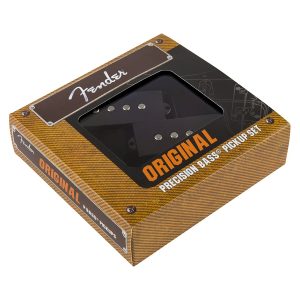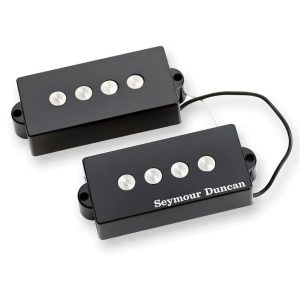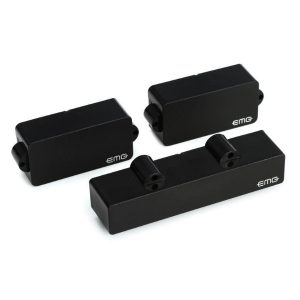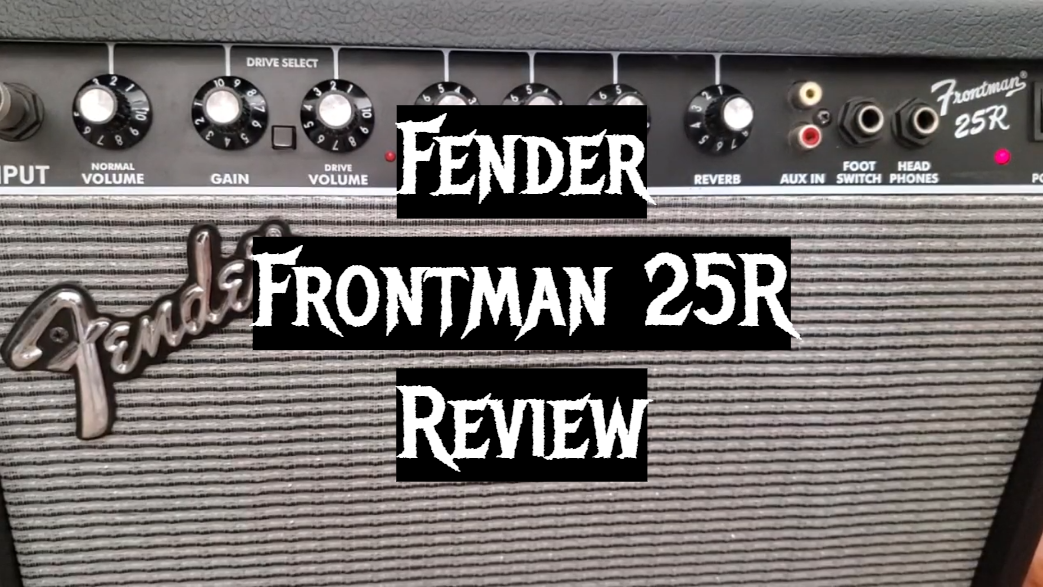
- Alnico 5 Magnets
- Enamel-Coated Magnet Wire And Cloth-Covered
- Flush-Mount Pole Pieces For Even String Response

- Alnico 5 Magnets
- Forbon Flatwork And Are Vacuum Wax Potted
- Massive P-Bass Pickups With A High Capacity

- Alnico 5 Magnets
- Enamel-Coated Magnet Wire And Cloth-Covered
- Booming Lows, Punchy Midrange And Clear High End

- Ceramic Magnets
- Stainless Steel Material, With Medium Gauge
- For Fender Jazz Bass Or Similar Bass Guitar Of That

- Bridge System – Adjustable
- Flexibility And A Wide Range Of Tonal Combinations
- Tight Mid-Range With Dynamic High End Response
Choose the Best Bass Pickup for Metal
Customer’s Choice: the Best Rated Bass Pickups for Metal
25 users answered this survey. Please help us improve this review!
Table of Contents
Best Bass Pickups for Metal – Buyer’s Guide
Parameters such as the type, function, and position of the installed pickups have a massive influence on the sound and the use of electric basses.
In our following online guide, we have compiled the most important information on the subject and hope to provide you with a smooth introduction to the big, colorful world of bass tones. Many useful tips from experts solve problems before they can arise from buying the wrong instrument.
Background info
Electric basses, in the form we know them today, first appeared in the early 1940s. The electric bass’s actual originator was probably Audiovox Manufacturing & Co, a tiny company that developed the #736 Electric Bass Fiddle between 1935 and 1936. Unfortunately, this development was probably so far ahead of its time that very few copies of it were sold. The company went bankrupt, and not only the company and its developer but also the electric bass was completely forgotten.
Therefore, the modern electric bass father is generally considered to be Leo Fender, who started the train rolling with the release of the Precision bass in 1951. Just as with the electric guitar’s advent a few years earlier, the increased possibilities and enormous assertiveness of electric bass quickly affected their status. As a result, the bass took on an increasingly important role in the band structure and – together with the drums – formed the burgeoning rock movement’s backbone. The forms were further developed and “modernized” until 1957. Around 1959, the legendary jazz bass with two single-coil pickups was born.
But there are more similarities between electrified thin and thick strings. Just as with electric guitars, the design of early electric basses was already so coherent than many of the models introduced at that time are still available today – or at least were the inspiration for new shapes!
With the increased volume and the increasingly comfortable playability of the instruments, however, not only their status changed. Playing techniques and demands also continued to evolve. While bassists at the beginning of the new era were initially content with “quavering” basic notes (of course, this doesn’t have to be a bad thing!!!), over the years, more and more musicians discovered the bass as a solo instrument. In turn, this led to ever new innovative modifications – not least in the field of electronics. Today, bassists can draw from a wide range of models. Fretted or fretless, four-, five- or six-stringed, with screwed, glued, or neck-through necks, built from traditional tonewoods or exotic woods – the range is almost limitless.
Active or passive – that is the question here
Passive pickups
Since the first electric basses were exclusively equipped with passive pickups, you usually hear the sound of passive basses on classic rock and Motown productions. Passive pickups have typical analog sound characteristics and deliver warm, round, and very dynamic sounds. The possibilities to influence the sound are generally rather moderate with passive pickups. Normally, passive electric basses offer (in addition to the volume control) controls for bass and treble, with the help of which the sound’s bass and treble components can be lowered. In other words, the player of bass with passive electronics can “only” work on the “natural” frequency range of the pickups: More treble and bass than the pickup can deliver at maximum is not available. Of course, this is not necessarily a flaw. You have fewer possibilities to process the sound than, for example, with active systems.
Since passive pickups are usually equipped with stronger magnets than their active brothers, they also pick up a little more ambient noise. But more on that later (see also the section on “Construction Types”).
Active Pickups
Active pickups worked as a team with preamps and integrated EQs (equalizers). One or two 9V block batteries usually power these. EQs allow for intensive processing of the sound, as they allow for both “clipping” and “boosting” (raising) of frequency ranges. How far this goes varies from bass to bass. For example, 2-band EQs allow you to edit the bass and treble. With 3-band EQs, you also can “manipulate” the mids, which are extremely important for the character of a sound. And if you want even more, basses with additional sound-shaping tools (filters, etc.) offer almost unlimited possibilities.
Other characteristics of active pickups:
Active pickups generally have a higher output than passive pickups – so they are louder. Their basic sound is clear, brilliant, and often a little percussive. Because of the weaker magnets, active pickups are less sensitive to interference and therefore sound very clean. But where there is a lot of light, there are many shadows: Depending on the quality of the preamp used, it can produce unpleasant background noise, especially if the treble is boosted a lot.
It isn’t easy to give a basic assessment of which approach is the better one. Good passive pickups deliver an irresistibly warm and very dynamic analog sound. Active pickups sound clearer and subjectively cleaner – but often also a bit clinical. Because of the active tone control, you also have more possibilities to influence the performance. But it would be best if you kept in mind: A high-quality passive pickup sounds cleaner than a poor active one. Conversely, a first-class active system can sound warmer and fatter than poor passive pickups.
Passive pickups do a top job on growling rock and soul basslines, and brute slaps as a general rule. Clean, very clean sounds, fusion leads, and virtuoso slap riffs come across perfectly on active basses. Even the more demanding “frequency response” of 6-string basses is better off with active systems than with passive ones.
And if you want both, choose a bass that can be operated both actively and passively!
Bass pickups for metal – The designs
Now that we have learned about the fundamental differences between active and passive bass pickups, it is time to get back to basics and look at the various pickup designs and their respective characteristics.
The pickup concepts described in the following are available in both active and passive design! The used components and modes of operation are identical for passive and active pickups.
A pickup consists of a copper wire coil, which encloses one or more magnets. In many models, however, pole pieces made of iron are also used. To achieve the magnetization that is decisive for the function, they are connected to a magnet underneath the coil body. The pole pieces have the task of picking up each individual bass string’s vibration with pinpoint accuracy. The vibration of the (metal) strings over the magnets/pole pieces changes the magnetic field prevailing here and thus stimulates the copper wire coil to generate a voltage. The process described is known in physics as induction. Since the strength of the current flowing is directly dependent on the respective intensity/frequency at which the string played vibrates in the magnetic field, one can speak in layman’s terms of the current induced in the coils converting the sound of the strings one-to-one into an electrical signal. It carries all the sound-specific information and can be converted back into an audible signal by an appropriate amplifier.
Just as with guitars, two basic construction principles have become established for basses, defined by the number of coils used: Single coils and double coils or humbuckers.
Single-coil Bass Pickups
As the name suggests, a single-coil consists of one coil surrounding the magnetic or magnetized pole pieces. Single coils deliver a brilliant, very clear, and open tone. However, their single-coil design makes them susceptible to ambient noise caused by electromagnetic emissions from radios, transformers, neon tubes, or computer monitors.
By the way: If you have a bass with two single coils (like the Fender Jazz Bass) and level both pickups at the same volume level, this can lead to a minimization of the sensitivity to ambient noise.
Humbucker/Double Coil Bass Pickups
Compared to single coils, the performance of bass humbuckers is quieter and usually more powerful. This is due to the fact that the two coils are combined in such a way that any noise caused by external electromagnetic influences is canceled out. Simultaneously, both coils’ output powers are added – a fact that inevitably leads to more power but also changes the sound character: The sound becomes more mid-emphasized and smoother, with a touch less shine than single coils – but has more pressure and power.
Split coil pickups
The third variant was first used in the Fender Precision Bass and therefore also bears the abbreviation P-style pickup. Just like humbuckers, P-style pickups are basically two-coil designs. However, the two coils here do not pick up all the strings at the same time. Here, one coil is responsible for the E and A strings, the other for the G and D strings.
Piezo Pickups
The piezo crystals integrated with these pickups generate energy under mechanical load/string vibration and are usually located in the bridge, below the tabs.
Due to their special mode of operation, the sound delivered is very different from that of magnetic pickups. That’s why piezo pickups in the electric bass business serve more as a way to expand the sound range than as a full-fledged (and therefore sole) sound source.
The different sounds are that the magnetic coils of a normal pickup are primarily influenced by the vibration of the steel strings in their respective magnetic fields. On the other hand, Piezoelectric pickups respond equally to the mechanical movements of the strings and the body and can thus produce a sound with a more ‘acoustic’ character. However, how good the delivered sound is, in the end, depends largely on the quality of the installed electronics. Because just like active magnetic pickups, piezo pickups always need their preamplifier. And this has a massive impact on the sound of the system. Poor piezo systems sound harsh and sharp – high-quality products deliver a very natural, almost acoustic sound.
By the way: Mixing magnetic and piezoelectrically “obtained” sounds has proven to be particularly effective in this context!
A humbucker in single coil format
Single coils sound great and play at least as weighty a role as their double-coil counterparts. Their greater sensitivity to ambient noise has not changed this. Nevertheless, the hottest manufacturers worked for many years on methods to effectively eliminate hum susceptibility in single-coils as well.
The problem with this is that single-coil fans don’t want a double coil sound. So it was necessary to develop pickups that are resistant to side noise but still deliver the typical single-coil sound. Basically, it was clear that it would not work without using a second, hum-canceling coil.
The hottest manufacturers of bass pickups (DiMarzio, Fender Noiseless, EMG, Seymour Duncan, etc.) use the same trick. To accommodate the two necessary coils in a single coil housing, they are stacked on top of each other (stacked, e.g., Seymour Duncan STK-J2, or DiMarzio Model J). So that the coils affect each other as little as possible, they are separated by a thick shielding plate. However, the most important feature of the pickups is that the coils differ significantly in their respective number of windings. The result is an almost authentic single-coil sound – and without hum!
Taking into account the two coils and four connecting cables, the wiring of the single virtual coils also differs from that of real single coils. It is more similar to that of humbuckers, and so, for example, coil-split (single coil) or phase reverse circuits are possible, which further increases the sonic possibilities.
Placement and sounds
In addition to the respective design, the place where the installed pickup does its work also plays a major role in the delivered sound’s character. Basically, the closer the pickup is to the bridge (bridge/bridge), the more trebly, thin, and percussive the sound will be. The further you move the pickup towards the neck, the warmer and fuller the result sounds.
To be able to pick up the sound of the strings as optimally as possible, the pickups used are matched to their respective workplaces. So it makes no sense to use a pickup intended by the manufacturer for use in the bridge position on the neck. And the reverse is not true either. If you are planning to buy a replacement pickup, you should make sure that the pickup is installed in the position recommended by the manufacturer. Pickups designed to work on the bridge are called bridge pickups, while pickups designed to work on the neck are called neck pickups.
Tip: Bassists who value the widest possible sound spectrum should definitely buy a bass with two pickups. The most popular pickup configuration is the P-J combination, with a P-style pickup on the neck and a J-style pickup on the bridge.
Useful Video: EMG Bass Pickups A/B
Conclusion
The bottom line is that the style in which a bassist wants to work has a decisive influence on the respective pickup equipment (and the type of electronics) of a possible dream bass. Whether the passive or the active approach is the better one is a question that divides opinions even among professionals. Good passive pickups convince with an irresistibly warm and very dynamic analog sound.
Active pickups sound clearer and subjectively cleaner – but often also a bit clinical. Because of the active tone control, however, you have more possibilities to influence the performance. However, one should keep in mind: A high-quality passive pickup always sounds cleaner than a poor active one. Conversely, a first-class active system can sound warmer and fatter than poor passive pickups.
Passive pickups do a top job on growling rock and soul basslines, and brute slaps as a general rule. Clean, very clean sounds, fusion leads, and virtuoso slap riffs come across perfectly on active basses. Even the more demanding “frequency response” of 6-string basses is better off with active systems than passive ones. And if you want both, choose a bass that can be operated both actively and passively! The same applies to the question of whether you should use single coils or humbuckers. A humbucker’s sound is basically more centered, smoother, and more powerful, but also has less shine than a single coil.
So also, in the question of the pickup choice, the formula is valid: Bassists who value the broadest possible sound spectrum should definitely opt for bass with two pickups. And humbuckers equipped with a split-coil option also provide a real sound plus.






Leave a Reply